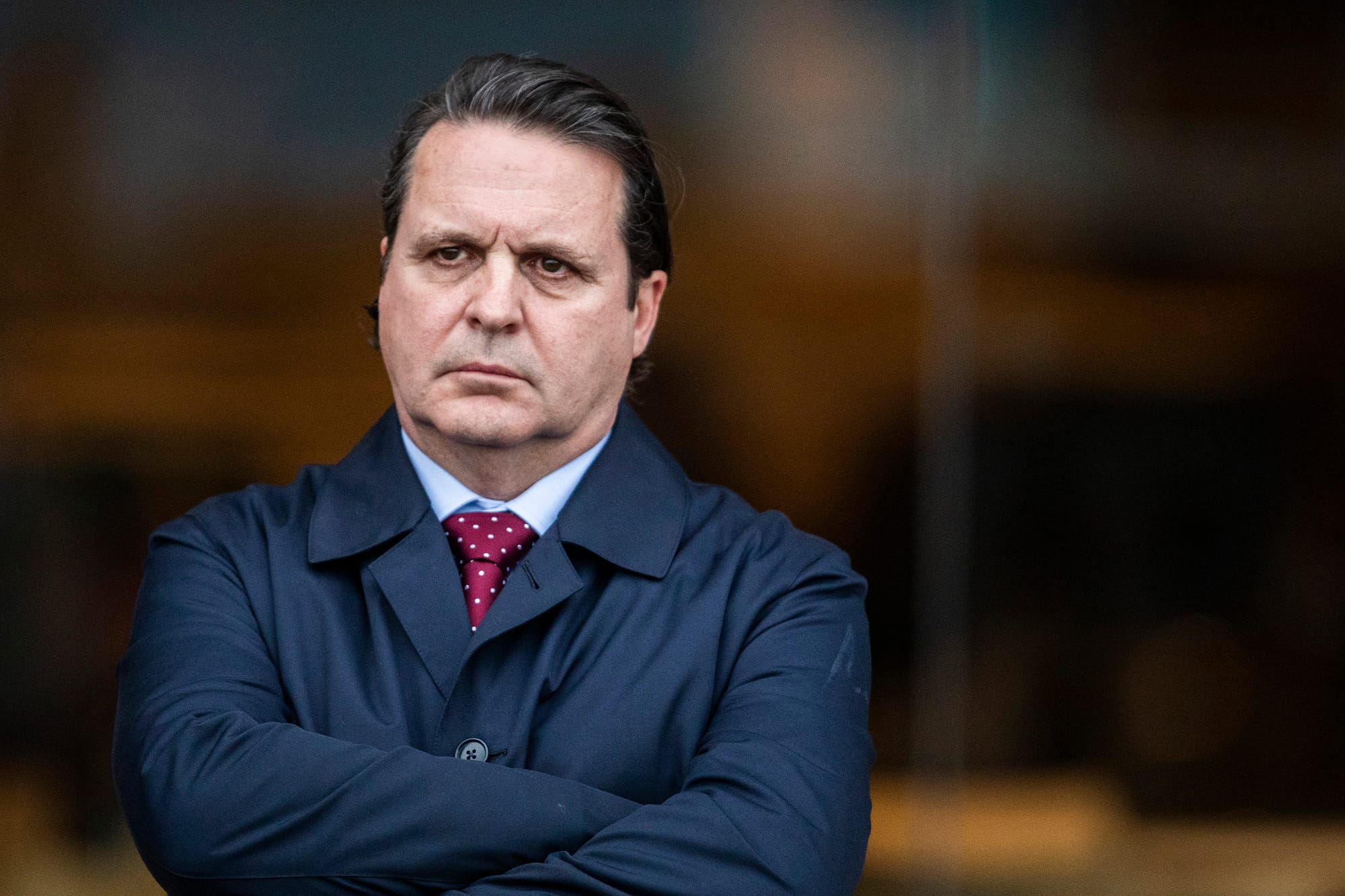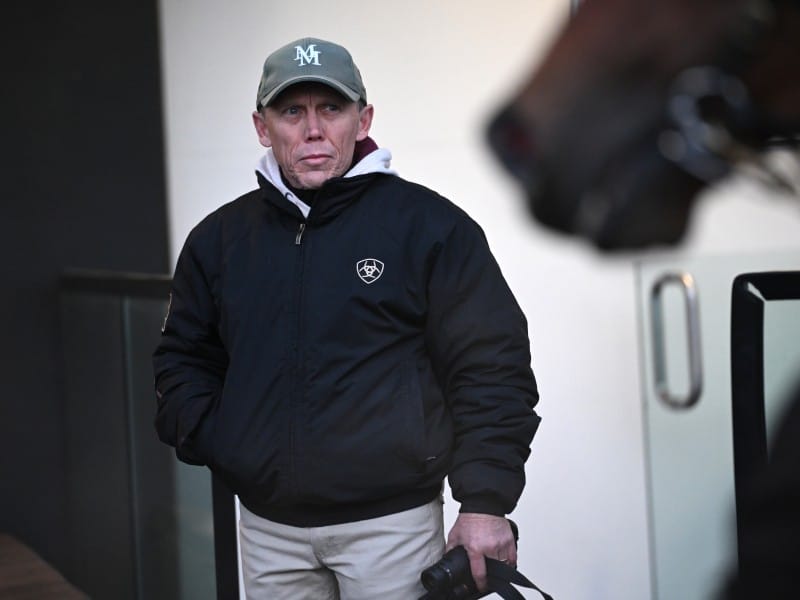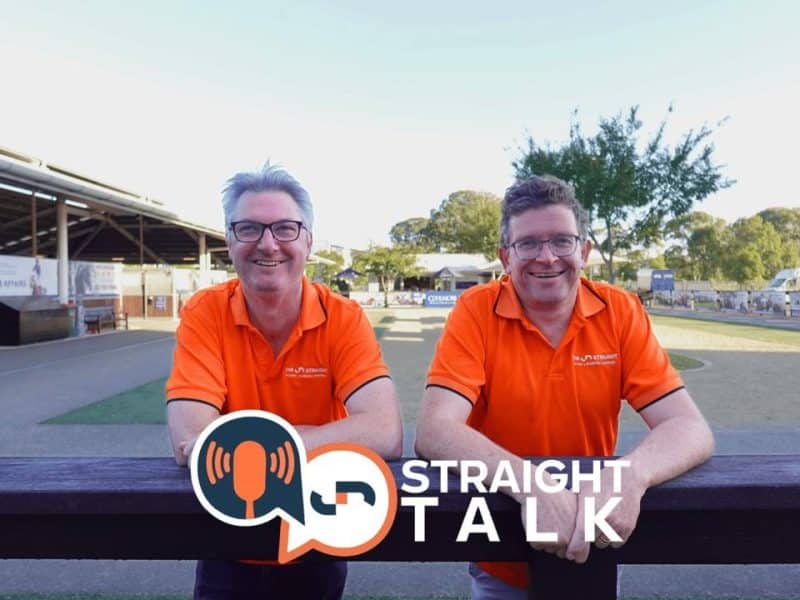‘The rituals are gone’ – Bruce McAvaney laments the Melbourne Cup’s lost lustre
Broadcasting legend Bruce McAvaney still believes the Melbourne Cup is racing’s greatest prize, but believes it no longer stops the nation. Matt Stewart spoke to McAvaney and trainer Richard Freedman about how the Cup has changed.

When Bruce McAvaney was a kid, the Melbourne Cup meant the world because the world, at least to an 11-year-old in Adelaide, stopped in its tracks for it.
Classrooms took time out, Catholic priests threw Cup tips into Sunday sermons, taxi drivers were immersed in it, families and neighbours jostled for lounge room vantage points as 3pm drew close, Dad had all the tickets after queuing at the TAB, and Mum, who was best with scissors, cut up the sweep from the paper.
The Melbourne Cup indeed stopped a nation. New Zealand also stood still. It was a national celebration beyond racing border wars. It had community approval. Battlers could relate because battlers could win it.
There was no welfare alarm because horses rarely perished.
When budding champion Dulcify died in 1979, the anti-gambling lobby barely existed. A family sweep or a five-bob bet wasn’t going to ignite any hysteria.
“There were so many rituals associated with this thing we did once a year,” McAvaney said. “My mother ran the sweep and it was my job to go around and collect all the money and get all the names. It was a huge thing.
“It was collegiate, it was about suburbs and neighbourhoods, and it was for one race.”
For two generations, McAvaney had been the face, voice and heartbeat of the Melbourne Cup. Now 71, McAvaney chimed in annually on Network 10, then the Seven Network to champion horse racing in the context of a wider sporting landscape.
“It was by far the biggest sporting event in the nation. It had a big margin on the (then) VFL grand final,” McAvaney said.

Does the Cup still stop the nation?
“My gut feeling is that within the racing community the Melbourne Cup has diminished a little but for those who are not racegoers, or are once-a-year-racegoers, it has diminished greatly,” McAvaney said.
“Years ago, people may not have been caught up in the “magic” of the Cup but they weren’t aggressively opposed to racing. Today, more people turn their back on the race.”
Too many fly-in, fly-out internationals, a disconnect between the Caulfield Cup and Melbourne Cup and flash new rivals like the Everest have also loosened the Cup’s grip on hearts and minds, McAvaney says.
The twice-cancelled Melbourne Cup parade reflects nervousness about presenting the Cup, and horse racing, to the general public. Last year, roadworks prevented it from being held down Swanston Street. This year, the parade will be replaced by a mini parade of Living Legends horses out near Tullamarine. The little traditions are seemingly being lost.
“The Melbourne Cup is still unrivalled in racing. But it’s being challenged by The Everest, which has only been around for eight years, and the Cox Plate is getting closer,” McAvaney said.
“The Caulfield Cup has lost ground for many reasons but that has also weakened the Melbourne Cup. It was always about the great double and they are now separated. This year’s Caulfield Cup winner wasn’t even entered (for Flemington).”
McAvaney said international horses rarely used the Caulfield Cup en route to Flemington, adding a ratings-based system that issued horses the same weight in both races was flawed.
“The weights are fundamentally wrong and it needs to be readdressed,” he said.
The message is always of uplift when the Victoria Racing Club (VRC) posts its Cup week data. International visitors, hotel bookings, dining spend, even hat sales, are trotted out to prove the Cup’s ongoing impact.
Bruce McAvaney’s call of the 1985 Melbourne Cup, won by What A Nuisance. (Vision: YouTube)
According to the VRC, 11 million people watched, listened or “engaged in a Cup activity” in 2023 with a total viewing audience of 2.4 million via platforms such as social media, racing.com and 10 Play.
The race was broadcast into 209 countries, the global audience was 750 million and 369 radio stations across Australia ran the race call. The race itself still turns over many multiples in wagering on its nearest Australian competitor.
The more standard measures, the traditional basics the VRC say are only part of the story, declined.
These include sponsors, who have become increasingly nervous about brand, and racing. After seven years, Kennedy this year ditched its sponsorship of the VRC Oaks. Emirates and AAMI also ceased VRC sponsorship in recent years.
Last year 85,000 attended the Cup. From 2009 to 2016, crowds topped 100,000. Ten’s main channel audience was down 345,000 from 1.695 million in 2022. In 2012, Seven’s audience was 2.767 million. Channel Nine’s five-year broadcast deal begins this year.

The “engagement” numbers bemuse Sydney trainer Richard Freedman, who was part of the FBI – Freedman Brothers Incorporated – when Tawrrific (1989), Subzero (1992) and Doriemus (1995) won the race under Lee Freedman.
“Engagement? What does that actually mean? If they can show me proof it leads to greater turnover, the real numbers of people turning up and taking an ongoing interest, then I’ll take notice,” Freedman said.
Like McAvaney, Freedman remembers what it was like being a kid on Cup day.
“The school teacher would stop class for it. You had kids on buses being bookies. Kids dressed up as jockeys. You had a horse in the sweep,” he said.
Freedman said love for racing and the Cup started at childhood. McAvaney, who would dash around for his Mum collecting bets on the most exciting day of the year, would agree.
“Years ago, people may not have been caught up in the “magic” of the Cup but they weren’t aggressively opposed to racing. Today, more people turn their back on the race” – Bruce McAvaney
Schoolkids are no longer allowed to celebrate the Cup. Former Racing Victoria chief executive Giles Thompson infamously said RV had given up promoting racing in schools because of what he termed “wokeism”.
A primary school near Flemington once had a special Cup day where kids dressed up as horses and jockeys and staged races. That was shut down five years ago.
Two years ago, a secondary school in southeast Melbourne presented a Year Nine English class with “racing is cruel. Discuss”.
This messaging permeates.
McAvaney once disagreed with Bart Cummings that “too many” internationals – the FIFO’s – would diminish the race as a local celebration.
There will be five in next Tuesday’s Cup compared to 11 in 2014, 2015, 2017 and 2018.
“On reflection, Bart was right. The race got too heavy with internationals. For local interest, it diminished the race a bit. I feel this year they’ve got it about right,” McAvaney said.
Vintage Crop’s win in 1993 paved the way for the internationalisation of the Melbourne Cup. (Vision: YouTube)
Freedman said the FIFO horses had delivered fleeting heroes and constant headaches.
“It frustrates me still that they try to lure them out here as if they matter. They don’t,” Freedman said.
“There was the novelty effect with Vintage Crop and it did spark a bit of interest. Then the VRC decided we needed to test our horses on the international stage when in fact no-one who loved the Cup cared one bit.
“The Cup was an absolute phenomenon. It engaged the entire population of a country. No other country in the world had anything like it. But it really lost its way.”
Freedman said the FIFO Cup winners mostly came and went as ghosts. They left no imprint. He accepts others strongly disagree, that others believe internationalisation made our success story an international hit.
Six FIFO horses from 2013 until 2022 perished at the track.
“The first death was the first nail. Then there were five more. If the fatalities didn’t happen in the Cup, it attracted far less attention. But they happened in the Melbourne Cup. For the Melbourne Cup, this was a turning point,” Freedman said.
He said the anti-Cup sentiment “had grown ten to one compared to those who supported it and horse racing because of the fatalities that occurred in the Cup”.
Strict veterinary measures – essential given the fatalities – have reined in international numbers. They have forced a recalibration of a race that was drifting offshore.
Freedman says he is not against international competitors “per se” but says they should arrive many months earlier and enter local stables where their bones can adapt and the horses can race and become familiar with local fans.
To Freedman, the Melbourne Cup had become an unrelatable global contest of rich versus super-rich. The battler stories, of Darwin school teacher Wendy Green driving home with the Cup in the boot of her hire-car, or farm-trained Kiwi, mostly disappeared after the international wave, he said.
“The Cup was an absolute phenomenon. It engaged the entire population of a country. No other country in the world had anything like it. But it really lost its way” – Richard Freedman
McAvaney still adores the Melbourne Cup. He wants to make that clear. He says the world has changed around it.
“(Perceptions of) the Cup changed and are changing. The rituals are gone. I’m sure the sweeps and the barbecues aren’t happening or at least not like they used to,” he said.
“The Melbourne Cup will always be the greatest prize but it no longer stops the nation. That’s just how I see it. Love it, still, but that’s my view.
“Forever, it was the number one sporting event in the country but now it doesn’t come close to the AFL grand final.
“It remains the great race. My spine will still tingle when those gates open next Tuesday. In racing, there is still nothing like it.”





